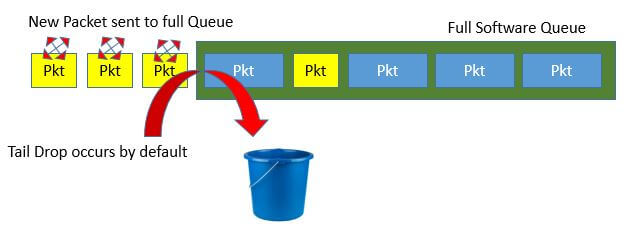EMAIL SUPPORT
dclessons@dclessons.comLOCATION
USQOS Queuing and Scheduling
Whenever any traffic moves from high Bw link to low bandwidth link speed mismatches and cause network congestion. There also congestion occurs in aggregation layers and mostly due to oversubscription.
Two control and avoid congestion and manage the bandwidth there are two solutions available:
- Congestion Management
- Congestion Avoidance
Congestion Management: It uses the queuing algorithms to manage the congestion in network by shorting the packets and then prioritize the packets on output links by various queues. QOS Queuing feature are enabled by default, and when users configures its own queuing policy and apply it on interfaces the new queuing policy replaces the default on.
Congestion Avoidance: This method is used to monitor the network traffic to anticipate and avoid the congestion at common network bottleneck points. In this Packet is dropped by default feature like tail drop or by using more complex dropping technique like WRED.
Tail Drop:
When a packet reached to any interface and is not transmitted quickly it is queued and once interface are free to process the packet, the packet is taken out from queue and transmitted on the interface. If the rate at which packet arrives on interface is more than device capability to process it and forward it , the size of the queue starts increasing and at point comes it reaches to maximum and interface gets congested. Now to avoid this tail drops occurs which is default queuing response to congestion.

In tail drop those traffic which are trying to enter to interface and if interface is congested all entering packet will be dropped until congestion is eliminated and queue is no longer full.
When Tail drop happens it has following drawbacks:
- It affects most TCP sessions which simultaneously back off and then restart again which further causes more link utilization also called as TCP Global Synchronization.
- It also cause the another issue we say it as TCP Starvation, in which all buffers are temporarily seized by aggressive flows and normal TCP flows experience buffer starvation.





LEAVE A COMMENT
Please login here to comment.